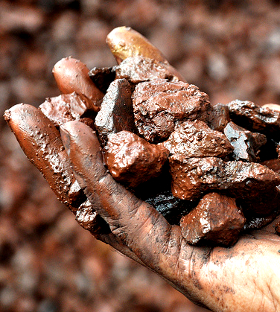Rio's iron ride leads to cap-ex cut
 Mining giant Rio Tinto has posted first-half profits that show the company’s fortune sliding down alongside metal prices, leading it to make a pledge of $1 billion in cost-cuts this year.
Mining giant Rio Tinto has posted first-half profits that show the company’s fortune sliding down alongside metal prices, leading it to make a pledge of $1 billion in cost-cuts this year.
Underlying earnings in Rio’s iron ore division plunged 55 in the first half, compared to the year before, despite it dramatically reducing the amount it spends to mine each tonne.
Still, given the company’s broader operating conditions, Rio Tinto Chief Executive Sam Walsh has labelled the results “robust”.
But he has warned that Rio now faces price declines in nearly all the commodities it is involved with.
Some analysts consider it another dark mark against the mining sector, which has been one of the worst performers on Londons FTSE index this year, due largely to oversupply and slowing growth in major consumerChina.
“The next six months are likely to be an even more challenging period, given the price declines we have seen so far, with the anticipated oversupply of iron ore yet to fully play out,” Investec said in a note to clients.
Rio's capital spending reduction target has been raised from $750 million to $1 billion this year, to help it weather weak conditions, Mr Walsh has told reporters.
Despite the stormy outlook Rio has managed to lift its interim dividend by 12 percent to $1.075 per share.
Its net profit fell 82 percent to $806 million in the six months to June 30, while underlying earnings – counted without the impact of one-off impairments - fell 43 percent to $2.9 billion.
While the company has a reasonably diverse portfolio, it is still dependent on iron ore for 72 per cent of its overall net earnings.
China's steel production – the main measure of iron ore demand - has been lower in 2015 than the year before, but Mr Walsh says there is room for growth.
“The recovery will be characterised by slower commodity demand growth compared to the past decade and a likely continued focus on productivity and costs over capital project development,” he said.
“In terms of supply and demand, we are really seeing that the market has reached some sort of equilibrium.”
Spot iron ore hit a record low of $44.10 a tonne in July, and even with its recent modest recovery to $56.40 a tonne, the price is down by over 22 per cent this year.







 Print
Print